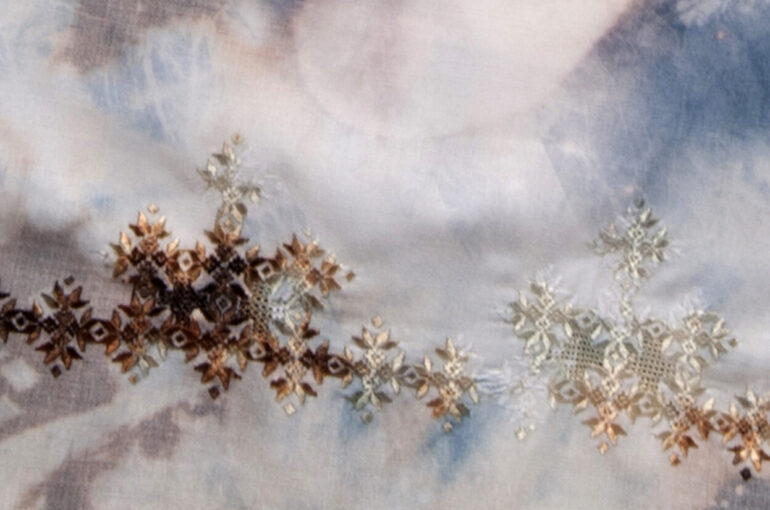Embroidered Touch – Life Space

Dear Friends, Colleagues & Re-FREAM Enthusiasts,
In tribute to International Women’s Day, I wanted to share with you the first in a series of blog posts that explore design projects I undertook, which lead me to my current research. Throughout these posts I will share lessons learned from each project, to illustrate how my current body of work is the product of sustained research over several years. It began with a collaboration between myself and a group of Afghani women that was an enriching, humbling and powerful experience.
In 2011, I teamed up with the Afghanischer Frauenverein (The Afghan Women’s Association, in Osnabrück, Germany) to develop a limited-edition collection that was as much about craft and technology as it was about bridging cultures. The association worked with refugee women to create hand-embroidered fabrics from Afghanistan and Pakistan, as part of a micro-business program and incubator at the Honar Educational Training Center in Pakistan. We can learn a lot about a culture through its craft traditions, which also gives a sense of purpose to people’s lives and humanizes marginalized communities. I began this project by studying the traditional embroidery and dying techniques employed by these Afghani women.
Once I understood the fundamentals of the craft, I worked with them to reimagine these techniques through my own lens as a designer and technologist. With every collaborative effort, there is a back and forth as we experimented to see what’s possible. The result of this collaboration was a collection of dyed and embroidered garments that were exhibited in October 2012 at the Bazonnale in Weimar, Germany. Embroidery and textile traditions aren’t static but often evolve over time, taking on new meaning from one generation to the next. For communities that have experienced the trauma of conflict, violence and displacement, their knowledge of these techniques is often one of the few remaining links to their homeland. A knowledge that they carry with them wherever they go. Producing this kind of work can also be seen as an act of resistance and healing, in addition to affirming the existence of one’s culture and identity. For more information on this vital organization please visit: www.afghanischer-frauenverein.de.
Similar to my project with Afghani women, the tactile nature of working with textiles is central to my current machine embroidery project with the Fraunhofer IZM, “Touch (and staying in Touch).” ‘Touch’ forms the basis and the guiding principle for developing the technology and design choices I’m making throughout this project. It’s particularly relevant while living during a pandemic, where social distancing and a lack of touch has become normal and necessary. But what does it mean to live without touch, particularly in a fast-moving world that has become increasingly connected through technology; one where in-person human-to-human interaction has been replaced by texting and Zoom calls? What’s lost in that process, in terms of human connections that allow us to grow and evolve? I had grown and learned tremendously through my experience of working with Afghani women, yet today that interaction wouldn’t have been possible during a pandemic.

These are the kinds of questions I’m considering as I explore how touch can be both personal and authentic if measured by technologies, such as transmitting signals via Bluetooth. It’s part of a deeper research into how the materials that touch our skin (the body’s largest organ) can create a meaningful form of communication today. Part of my process currently involves developing and testing embroidered materials with sensory properties that combine TEXPCB technology with knitting and embroidery techniques.
Additional questions I’m exploring during this research project include:
- How should the input (touch) be measured and what should the output be: Warmth, motion, pressure?
- How will sensory textiles look, feel and be fabricated so they aren’t only acceptable but desirable?
- How to create a sensory textile that influences and reflects an individual’s mood and feelings without the need for visible wires, power cords or large batteries?
Touch is essential to our existence as humans, yet we are only aware of it when it’s no longer available to us, one that contributes to our long-term physical and mental health. I continue to think about that as I’m reminded of the strong Afghani women refugees in Peshawar, Pakistan. They found strength in their cultural heritage through their embroidery, often adding a personal message in each design to share with me. It’s a reminder that designers and craftspeople are connected through the garments and textiles they produce in collaboration.
Sincerely,
Anke





